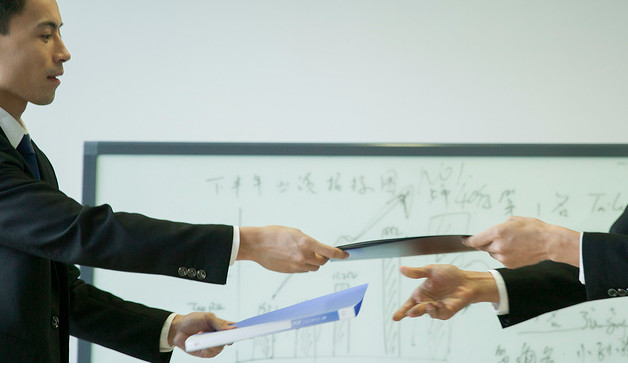- 目录

第1篇 凤凰古城英文导游辞导游词
ladies and gentlemen , welcome to fenghuang, the place where we're arriving is 'one of the two most beautiful town in china'----the old town of fenghuang,
it's a very important point that connects huaihua hunan and tongren guizhou together.and it's the hometown of mr shengcongwen.
fenghuang has wonderful natural landscapes,it's very hot for travelling since the old time. even a lot of teleplays were produced here.fenghuang is also a dradle for famous people ,shencongwen and xiongxiling are both spent their childhood here.
now, let's set out to enjoy these fantastic good views.
the former residence of shencongwen
this is the former residence of shencongwen,a very famous auther, archaeologist and historian in china.
lined in the zhongying street in the south part of the fenghuang old town, the residence is a typical spacious ancient countryard with special tectonic style of ming and qing dynasty. walk into the yard, you can find that there is a small patio in the center of the countryard. which is built with red rock. around the patio , there are about 10 rooms which are small but decorated by special carved wooden windows .it's so beautiful.
this countryard is built by mr shen's grandfather in 1866 on dec.28,1902. shencongwen was born in the old countyard.and spent his childhood here. in 1917,when he was 15 years old, mr shen left family and joined the army. from 1917 to 1922, mr shen had lived with soildiers, farmers, workers and some other
common people,and know their tragic lives. this special experience stunned up his enthusiasm of writhing . so in 1919, mr shen went to beijing alone, and began his hard writing . after his series of works west of hunan &fringe town were punished, mr shen became nation -wide well -known.at that time, he was even
as famous as luxun, another famous auther in chiese literature area. it's said that shencongwen is the one who is the most possible to win the prize.
mr shen devoted all his life to writing,his 5-million word works are though as the precious legacy to the world literature.meanwhile, these works are also very
veluable date for researching the history of hunan province and even china.
this 100-years-old countyard was renovated in 1989.the 1st room on the right hane is for displaying mr shen's photos.and what displayed in the 2nd room are mr shen's handwritingarticles.at the left side,you 'll find a list of mr shen's
work of different additions. in the center of the middle room .there is a mr shen's line drawing hanging on the wall. the left fringle room is mr shen's bedroom and another one on the right is full of marble desks and chairs.
$content2$
第2篇 南岳大庙英文导游辞导游词
good morning! ladies and gentlemen:
today we will go and visit the nanyue temple, nanyue temple is situated on the northern tip of nanyue township and at the southern foot of chidi peak. in a layout of nine rows, it is the largest and best-preserved ancient palatial architectural complex of south china. magnificent and splendid with resplendent upturned eaves. inside the east in parallel to eight buddhist palaces on the west, it is indeed a wonder in the history of religion that taoism. buddhism and confucian culture can co-exist within a single temple.
the exact time of the construction of nanyue temple is unknown. it existed asearly as in the qin and han dynastis. originally located on the summit of zhurong peak, the temple was later moved to the mountain foot to facilitate the religious activities. the beginning of the tang dynasty witnessed the formal construction of the heavenly lord huo's temple' the 'heavenly master temple'. so as to enshrine and worship the gods of the five sacred mountains, during the song dynasty the immortal of the hengshan mountain was revered as the 'heavenly master zhaosheng',as a result the temple was gradually expanded and enlarged. since the tang dynasty nanyue temple had beed subject to six fires and 16reconstructions all through the song. yuan, ming and qing dynasties. in the 8th year of emperor guangxu's reign in the qing dynasty (1882 a.d), the imperial court ordered the rbuilding of nanyue temple. which had been ruined by lightning, the project was imitative. copying the styles of the imperial palace. and even to the present day it is still well preserved.
fenced with red-brick walls.nanyue temple ccupies an area of some 70.000 square metres. from north to south lies in sequence nine rows and four courtyards-lingxing gate. kuixing tower. chuan gate. pavilion of imperial study, main hall, dwelling palace and the northern rear exit. the whole architecture complex stretches across on axis extending from south to north with its halls linked up together. the winding corridors and wing-rooms on both sides merge with each other. accentuating the magnificence of the stature of the principal part. on the east side of the main temple there are eight taoist palaces. coordinating with eight buddhist palaces on the west side.
the first row is lingxing gate. two gilded chinese characters 'mountain temple' are shining on the white marble at the top of the gate. the marble gate stands as high as 20 metres with a width of 1.1 metres and is meant to imply that during the past dynasties all the religious activities were officiated by real knowledgeable people. the second row is kuixing tower. the most perfectly preserved ancient stage in human province.with a breadth of 35metres and a length of 12. its fa?ade facing the main palace, the stage is the place where people hold religious activities and perform local operas during pilgrimage. before the tower stands a pair of 2-metre tall stone kylin (chinese unicorn). with their furious eyes widely open. they are like two solemn looking sentinels guarding the tower.
the pebble path under the kuixing tower leads to the third row-main chuan gate. east and west gates. the gateway is made of gray bricks with an awesome depth and height of 15 metres. the courtyard within is filled with dense cypress trees and carpeted with green grass. the fourth row is the pavilion of imperial study. distinguished by its gilded tiles. octagonal doubleeaved roofs and exquisitely-crafted arches. inside the pavilion there is a bixi in the shape of a legendary animal like tortoise. legend has it that bixi is the ninth son of the dragon. the bixi carries an imperial stele on which the full text of on rebuilding nanyue temple was carved in the 47th year of kangxi's reign(1780 a.d.) in the qing dynasty.
the fifth row is jiaying gate. named after the line from the annals of han-books of rites and joys: 'this row is the place where local magistrates and monks welcomed ritual officials dispatched from the capital. after the jiaying gate the sixth row comes into view-tower of imperial study. which is the storehouse of the collection of imperial calligraphies .messages and inscribed boards concerning the past emperors' ritual presentations to the mountain. sweeet osmanthus ahead of the tower submerges the building with its refreshing scent when it blossoms every autumn.
the seventh row is the main palace. surrounded by towering old trees. camphor trees planted in the song dynasty and cypress in the ming dynasty compete with each other in setting off the beauty of the upturned double-roofs and the splendour of the palace. adding tremendous awe to the main palac. as it stands 29.11 metres, its girandeur rivals that of the palace of supreme harmony in the forbidden city in beijing. inside the palace there are 72 stone pilliars, standing for the 72 peaks on the hengshan mountain. the two huge pillars upholding the main roofs were cut out of a whole granite. each weighing 14 tons.
encircled by the balustrades are 144 relief sculptures carved out of white marbles. based on shanhai jing . pillars on the forefront overlap. carved on them are 56 historical and legendary thles . on the square door were carved the images. on the square door were carved the images of the 24 filial sons and the images of the 18 scholars. here tourists can get a rough idea of the age-old chinese confucian and taoist cultures. clay statues-heavenly king zhaosheng and general jin and wu line up in the palace with their impressively dignified look, calling forth in tourists a feeling of profound respect.
the eighth row is the dwelling palacewith double roofs and in perfect harmony with the whole mountain. this structure keeps up the architectural style of the song dynasty and is decorated with coloured drawings and patterns whichare popular among palaces in the north. giving a sense of gorgeousness to this palace. the ninth row is the northern rear exit. the end of the axial architecture, with zhusheng palace to the right and chief god palace to the left, at the back of the exit. a path leads farther into the mountain.
nanyue temple occupies a prominent position in the history of ancient chinese architecture. it carries the grandeur characterized by palaces in the north. and at the same time it smacks of the loveliness featured by gardens in the south. the architectural arrangement of the temple is clearly demarcated and gently modulated. strongly indicating the ingenuity and originality of the craftsmen. its ground and upper layouts are like an eternal musical movement with its own overture, main body and coda. demonstrating the excellence of ancient chinese architecture.
nanyue temple carries a profound cultural connotation. it boasts a large number of clay statues. wood engravings and stone carvings, which are all closely linked up with chinese tradition and culture. over 800 dragons of various sizes, which are the symbol of the chinese nation.can be found everwhere in the temple. the carvings on the roof wood and white marble balustrades are an encyclopedia of ancient history and mythology. there are fairy tales- 'pan gu creating the universe.' 'hou yi shooting the suns', 'jing wei filling up the ocean'¡-; real stories about some historical figures- 'su wu shepherding sheep.' 'sleeping on sticks and tasting the gallbladder.' 'da mo crossing the sea'¡- ; legends extolling filial piety- 'melting the ice with body warmth to catch carps.' 'weeping on the bamboo until it turns into shoots'¡- most of the carvings are the lgends about the earliest ancestors of taoist immortals. as early as in the qing and ming dynasties, clay status, wood engraving and stone carving were reputed as 'the three wonders to the south of the yangtze river.'
all through the dynasties nanyue temple has been a thriving place to hold religious activities both for the feudal imperial courts and the ordinary people. every year the temple greets nearly 1.000.000 pilgrims. the offerings, presentation, titles and other customs are almost the same as they were thousands years ago. there are 'bowing pilgrimage' in which the pilgrims bow with each step or with every three steps , and 'hunger pilgrimage' in which the pilgrims bow with each step or with every three steps. 'and hunger pilgrimage' in which the pilgrims refrain from food during their trip. more often. pilgrims would set off in throngs. they wear gray clothes with a red cloth attached to their chest reading 'hengshan mountain pilgrimage.' holding buring incenses in hand. those pious pilgrims chant pilgriming theme' to pray for the peace of the nation and the wealth of people, making it a really spectacular scene on the mountain.
$content2$
第3篇 韶山英文导游辞导游词
good morning! ladies and gentlemen:
today, we will go and visit shaoshan, the hometown of chairman mao. shaoshan is a small mountain village about 100km southwest of changsha, the capital of hunan province, with some fairly beautiful scenery and a once typically hunan village atmosphere, shaoshan has been irreparably changed by history. on the 26th december 1893, a baby was born in a little house in this village, to a relatively wealthy peasant couple. the child was to grow up to become china's great helmsman, chairman mao zedong, and it was in this region that he spent his childhood and youth, attending school and helping his father with his work.
as the hometown of the great man of the generation, now shaoshan is one of the important tourist zones in hunan province. the major tourist sites including the former residence of chairman mao, memorial hall of mao zedong, water-dripping cave and steles forest of mao's poems,and so on.
the former residence of chairman mao is the most interesting site. entered through a courtyard, the house is of a sunny yellow, mud brick walls, with a nicely thatched roof, and is found on a wooded hillside, above some lush paddy fields. there are 13 and one half rooms in the former residence, which include one and half central room, a kitchen, a dining room, three family bedrooms and a guest room. within the rooms are various personal effects of mao and his parents, as well as photos from mao's life.
this is the central room, it was used by two families: mao’s family and their neighbor. so we said that there is only one half of the central room belongs to mao’s family. and this is there kitchen, where chairman mao often helped his mother doing some housework in his childhood. go through the kitchen was chairman mao’s parent's bedroom, there are two photos of chairman mao’s parents on the inner wall, and it was in this room where chairman mao was born.
the dripping water cave, about 3 km northwest of the village, is a very popular destination, possibly because of the fact that mao allegedly spent 11 days here in the early days of the cultural revolution years (1966-76), contemplating the unknown.
$content2$
第4篇 内蒙古昭君墓导游辞全文导游词
(行车途中)
各位朋友、女士们、先生们:
大家一路辛苦了,现在各位已经到达了塞外名城呼和浩特,古语说得好,有朋自远方来,不亦乐乎?”在此,我代表内蒙古xx旅行社的全体员工对大家的到来表示最热烈的欢迎,欢迎你们来美丽的内蒙古做客,愿美丽的草原给您留下一个深刻的印象!
我们今天参观的昭君墓,蒙古语为特木尔。乌虎儿,位于呼和浩特南郊9公里处的大黑河畔。现在的昭君墓是70年代重新修筑的,占地面积3.3公顷,墓高33米,墓身呈台体状,墓顶建有一座凉亭,是一座人工夯筑的大王丘,是昭君的衣裳冠墓。每年秋季,树叶枯黄时,昭君墓上依然草木青青所以人们又称这为青冢”。墓地东侧是历代名人为昭君墓题写的碑文,西侧是文物陈列室。登上墓顶,我们会看到连绵不断的阴山山脉横贯东西,也会欣赏到呼和浩特市全景。
很多朋友都或多或少地知道王昭君的故事,都知道这位奇女子是中国古代四大美女之一.历史上把这四大美女分别比喻成沉鱼落雁闭月、羞花,她们分别指的是谁呢?噢,陈先生说得对,沉鱼”指的西施,闭月”代表的是貂蝉,羞花”暗喻的是杨贵妃,而落雁呢,指的就是王昭君,为什么叫落雁”呢?说起来,还有一个小小的典故呢!传说昭君出塞路途中,遇到远归的大雁,大雁看到如此美貌的女子,惊呆了,忘记了飞翔,于是,从空中掉了下来,因此昭君有了落雁”的美称。
比起其他3位美女来,昭君不仅美而且她的也塞在中国历史上有着极为重要的作用。王昭君,名嫱,西汉南郡秭归肯人氏,就是现在湖北省秭归县。西汉元帝时,昭君以良家子选入掖庭”,所谓良家子”,指的不是医、巫、商贾、百工出身。掖庭”就是后宫,昭君入掖庭后级别是待诏”,待”是等待的待字,诏”是言字旁加一个召见的召,由字面上理解,她的地位是比较低的。史书记载,昭君入宫数岁,不得见御,积悲怨”。
这位小姐问,王昭君既然是中国古代四大美女之一,为什么没有得到皇帝的宠幸呢?关于这一点还有一段传说呢!
相传汉宫画师毛延寿给后宫美女画像,元帝通过画像选召宫女,对一般宫女来说,她们入后宫后最大的心愿就是得到皇上的恩典,在后宫争得三千宠爱集于一身”的优势,因此她们纷纷用财物贿赂毛延寿,请他们把自己画漂亮些。毛画师受人吹捧惯了,而昭君对这种不正之风深有不满,没有贿赂毛延寿。于是,画师便在昭君画像的眼角底下点了一颗伤夫落泪痣”,大家可别小看这颗痣,在2000多年前的封建观念中,人们认为有这种痣的女人是丈夫的克星,作为封建君主,当然不可能宠幸这样的女子了。这样,昭君便没有机会受宠了。但是,当汉元帝看到昭君本人,发现她并没有那颗伤夫落泪痣”时,追悔莫及,可惜一切已成定局,无法挽回,只好作罢,其实,这只是一段流传甚广的传说罢了。
公元前33年,昭君为了汉匈两族的团结友好,请求出行,充当汉族的和亲使者”,出嫁到塞北,户负起进行交给她的为巩固和加强汉匈两族团结友好的重大政治使命,为民族友好作出了杰出贡献。在历史上出塞和亲的女子比比皆是,而且大多是位高身贵的宗教室公主,但是,她们的事迹,绝大多数湮没在历史的长河中。
大家都知道昭君的丈夫是匈奴首领呼韩邪单于,单于就是王”的意思,那么昭君怎么样从一个汉宫宫女变成匈奴的阏氏呢?
这里要从匈奴这一部落说起。匈奴是游牧在蒙古高原最早的少数民族,它是古荤粥(xūn yù)即严狁(xiǎn yǚn)的后裔,秦汉初之际,匈奴首领冒顿单于统一各部,统一大漠南北广大地区。汉初,不断骚扰汉朝北部边界一带。由于当时西汉政权初建,国力微弱,再加上异姓诸王”努力的存在,中央集权还没有巩固,不足以和匈奴对抗。公元前200年,高谊刘邦,发兵30多万抗击匈奴,不想被匈奴40万精兵围困在平城白登陆山,就是今天山西省大同市郊外,长达7天7夜,这就是历史上有名的白登山之围”。面对困境,刘邦采纳谋士陈平的计策,向单于的瘀氏,就是妻子,贿赂珠宝,才得以逃脱。
白登山之围后,刘邦派刘敬前往匈奴去结和亲之纸,在此后的六七十年间,和亲成为汉朝对待匈奴的一种政策。
汉武帝时期,国力充实到足以抗拒匈奴的时候,便开始采取积极的战争方针对抗匈奴,公元前133年和前121年两次决定性的出击,使匈奴大败而归。张骞出使西域后,西域各国纷纷归附西汉,共同攻击匈奴。而在匈奴贵族集团内部为争夺单于”这个最高的统治权力,出现了分裂与内讧,最终分裂为南北匈奴两去,就是郅支单于”和呼韩邪单于”。呼韩邪单于和政敌争压最高统治权,两次被近出走。面对这样的局面和困境,呼韩邪单于想到了如果依靠汉朝中央政府的帮助,也许能给自己打出一条政治出路,平定郅支,统一匈奴,扭转局面,但是,等到汉朝消灭了郅支单于之后,呼韩邪单于下场就像郅支单于一样局势促使他进一步倒向汉朝。于是,从公元前49年开始,呼韩邪单于先后三次入汉韩,求见元帝,表示愿婿汉室以自亲”,得到元帝恩准。元帝将后宫待诏王昭君许配给呼韩邪单于为妻,封号宁胡瘀氏”,于是就有了千古美谈昭君出塞”。
昭君出塞”这一历史事件在汉匈关系上起到了积极的作用,它结束了汉匈两族159多年的敌对状态,把深受战争煎熬折磨的两族人民从战争的火坑里挽救出来,使两族转入和平友好的关系。政治方面,匈奴接受汉朝中央政权的领导,打破了旧的历史格局,促成了塞北与中原的统一。而在经济文化方面,汉匈关市”畅通,促进交流,匈奴人从汉人那里学会了计算和登记的方法,还学会了建筑和打井;汉族文化也同样受到了匈奴文化的影响,比如汉朝政府和民间养马业的空前发达,就和匈奴马匹的大量输入,养马技术的传授分不开。
对于两族的人民,和平就是一切,昭君出塞,单于附汉为他们带来了和平与富足。《汉书》记载边城晏闭,牛马布野,三世无犬呔之警,黎庶无干戈之役,”这段话为我们描绘了一幅百姓安居乐业,生产发展的幸福图景。
所以,用历史唯特主义的观点看待这一历史事件,就是它顺应了时代发展的趋势,反映了人民和平安定的愿望,推动了社会生产的发展,缓和并稳定了民族关系,在两千年的封建社会中, 这不失为一种明智之举。
各位团友,现今昭君墓已经成为内蒙古一处重要文物古迹和人们来到达呼和浩特必游的景点,对于今天的人们,用翦伯赞老先生的话来说是最恰当的,那就是:王昭君已不再是一个人物,而是民族友好的象征;昭君墓也不再是一座坟墓,它是一座民族友好的纪念塔”。
女士们、先生们,昭君墓马上就要到了,就让我们一齐去参观这座民族友好的纪念塔吧!
(雕像前)
各位团友,我们面前的这座雕像就是王昭君和呼韩邪单于,大家请看,王昭君温柔秀丽,柔中带刚;呼韩邪单于威武粗犷,具有北方少数民族特有的豪爽气质。这尊雕像的下面刻有蒙汉两种文字的和亲”,再请各位看看,昭君夫妇并骑的马头是朝什么方向呢?对这位团好猜对了,是西方,为什么朝西方呢?大家能想出来吗?原来这和昭君出塞的路线有关,公元前33年他们是从长安出发向西行至甘肃省庆阳县,然后经陕西榆林,内蒙东胜、杭锦旗、包头市,向漠北方向去了,所以从西安出发向西走,马头当然朝西了。好,大家可以在这里拍拍照。
(石碑前)
各位团友,这幅碑文是1963年董必武老先生参观昭君墓时写的,全诗为昭君自有千秋在,胡汉和亲识见高。词客各抒胸臆懑,舞文弄墨总徒劳。”两千多年来,许多文人墨客著书立说发表自己对人生的政治的见解,其中也有一些文人对昭君出塞有消极的看法,面对众说纷坛,董老毅然站在历史唯物主义的历史价值与意义,肯定了昭君人微言轻和亲使者的功劳。在当时的历史条件下,和亲”是明智之举,它对于当时社会的发展和安定起到了决定性的作用,顺应了时代发展趋势。文人墨客的惜古哀怨的诗句是徒劳无功的,因为历史是不可抹杀的,在社会主义中国的民族大家庭中,昭君的千秋”不权有存在的价值,而且影响范围越来越广,它符合了人类社会和平与发展的主题,使我们更加珍惜今天和平安定的环境。
(昭君墓前)
女士们、先生们,我们面对的这座大土丘就是昭君墓,最早见于唐代的记载。相传,昭君死后,汉匈人民都非常悲痛,纷纷赶来送葬,人们用衣裳襟包着土,一包一包地填在她的坟上;由于送葬的人成千上万,络绎不绝,每个人都想多捧几包土寄托自己的哀思,所以到最后竟垒成了一座形似小山的坟墓。内蒙古的昭君墓有若干个,而这座是真正的昭君墓,为什么会有那么多昭君墓呢?因为昭君给人民带来和平,人民爱戴她,很多人都愿意她埋葬在自己的家乡,也有的人认为她是仙女下凡,叫她昭君娘娘”,附近的百姓都认为,在昭君墓前许愿是十分灵验的,传说,一对青年夫妇久婚不育,于是便在这里许了愿并且住了一夜,第二年便有了健康的小宝宝。女士们、先生们,就让我们也在这里许个愿吧!愿民族团结,国家富强。
大家可能要问,王昭君真的葬在这里吗?事实上这只是昭君的衣裳冠墓,因为古代北方少数民族贵族死后都采取秘密下葬的方式,墓不立碑,似若不地。其实,昭君埋葬在哪里并不重要。重要的是她为人民的和平作出了贡献。现在大家看,墓中间刻有青冢”二字,青冢”就是绿色的坟墓,是昭群墓的别称,因为每年秋季,附近的树都已枯黄,而昭君墓四周却依然绿草青青,所以又称青冢”。好了,女士们、先生们,昭君墓就为您介绍到这里,如果您还有什么问题,我们可以讲座一下,如果没有问题,大家可以自由活动,四十分钟后在车门口集合,谢谢各位。









